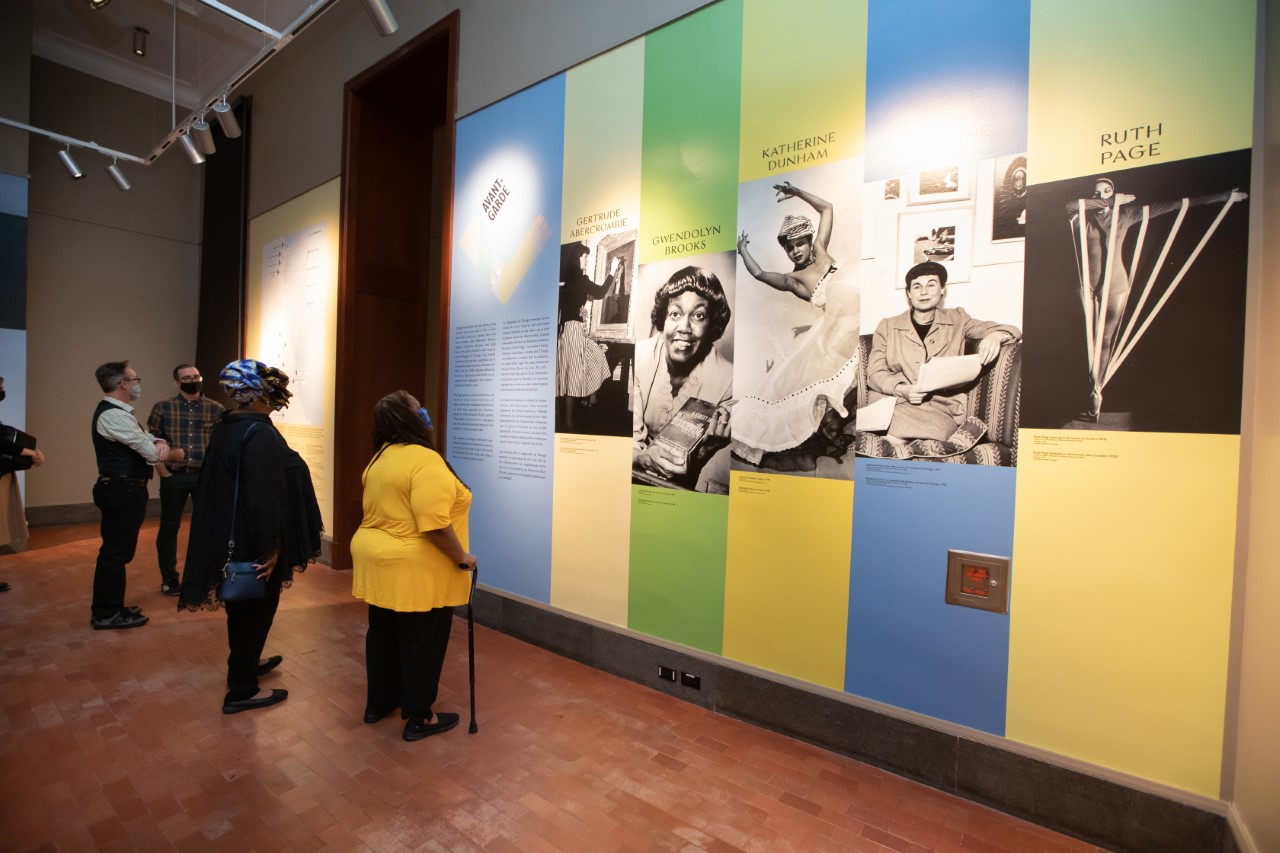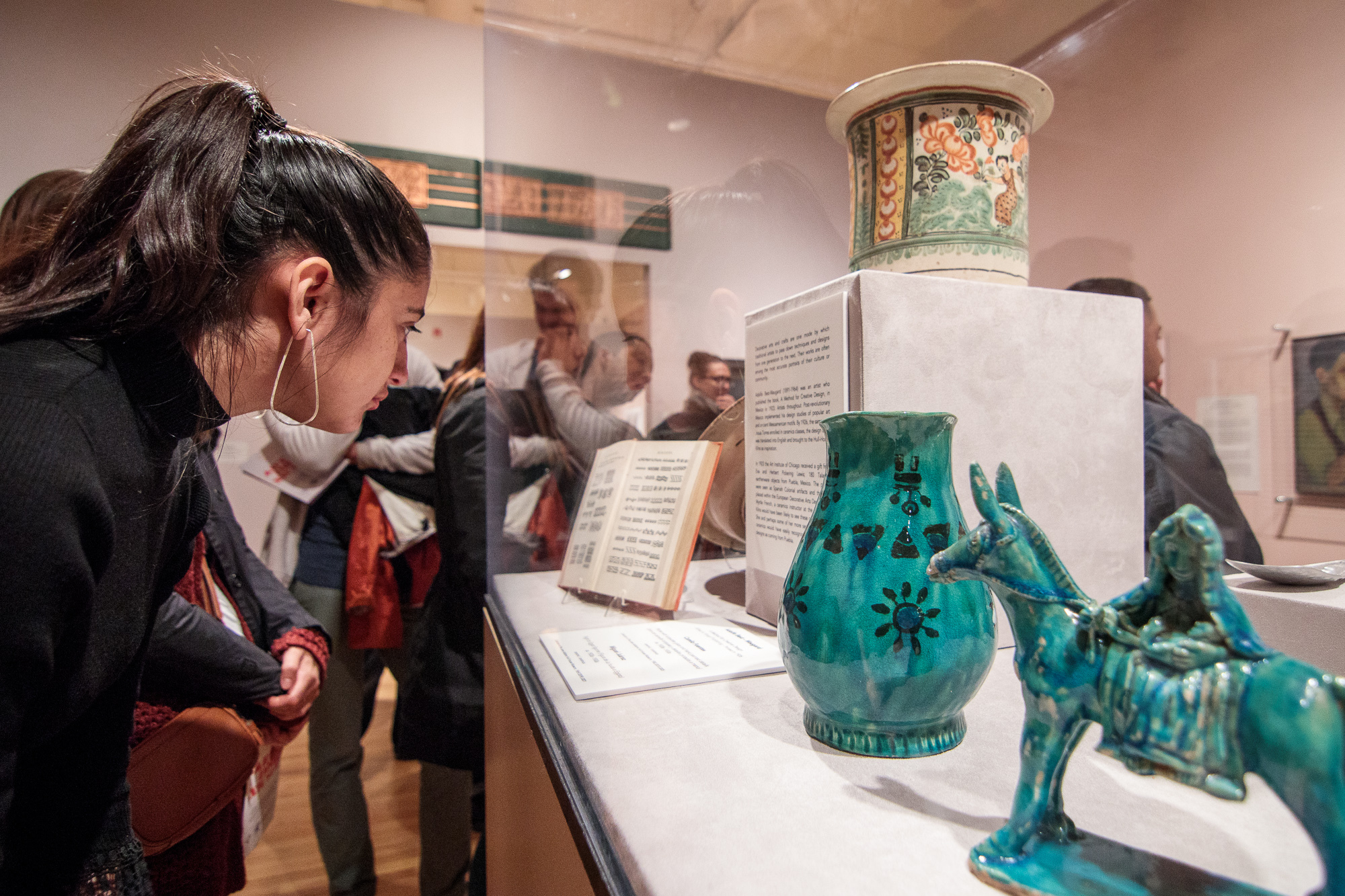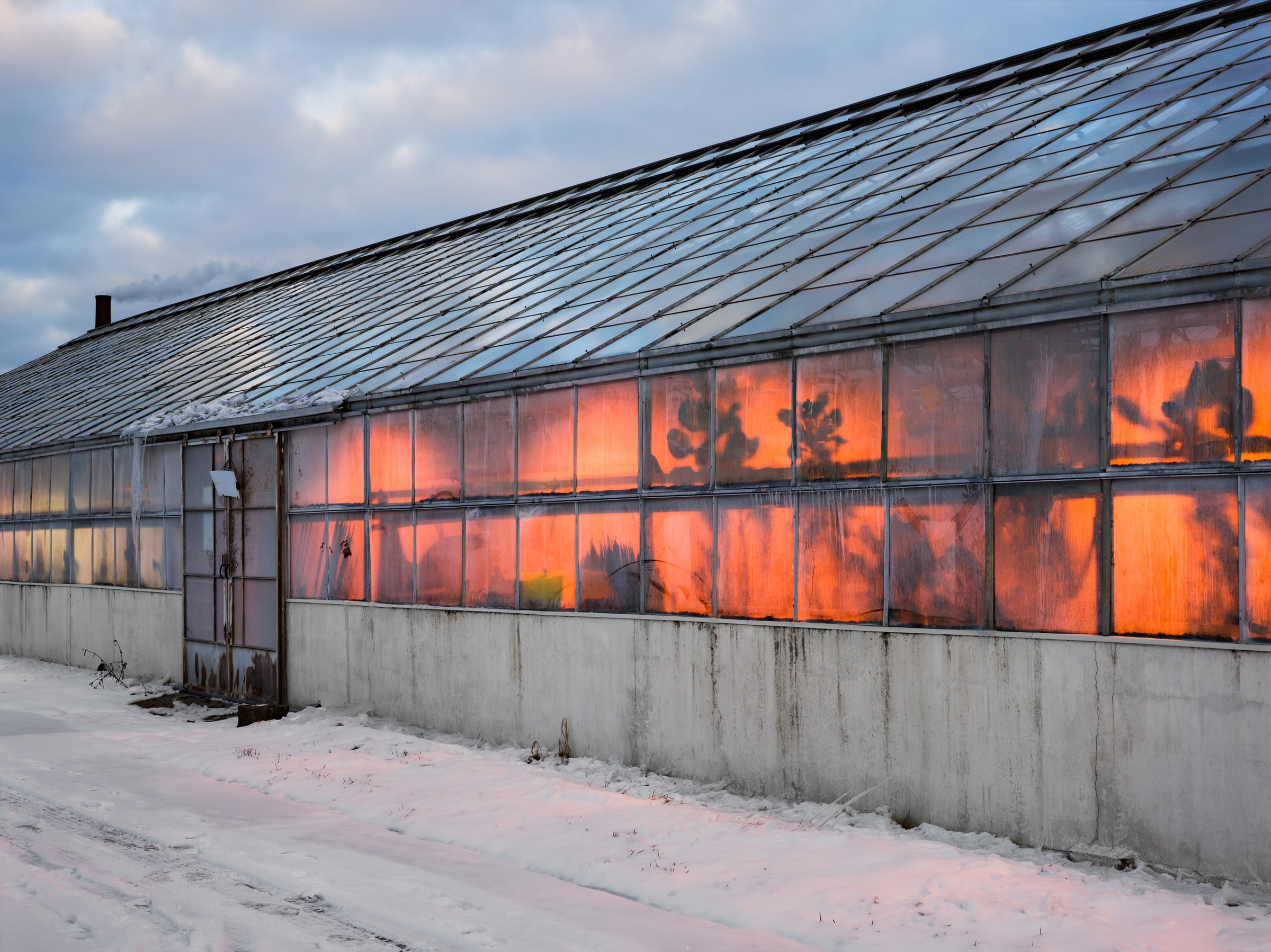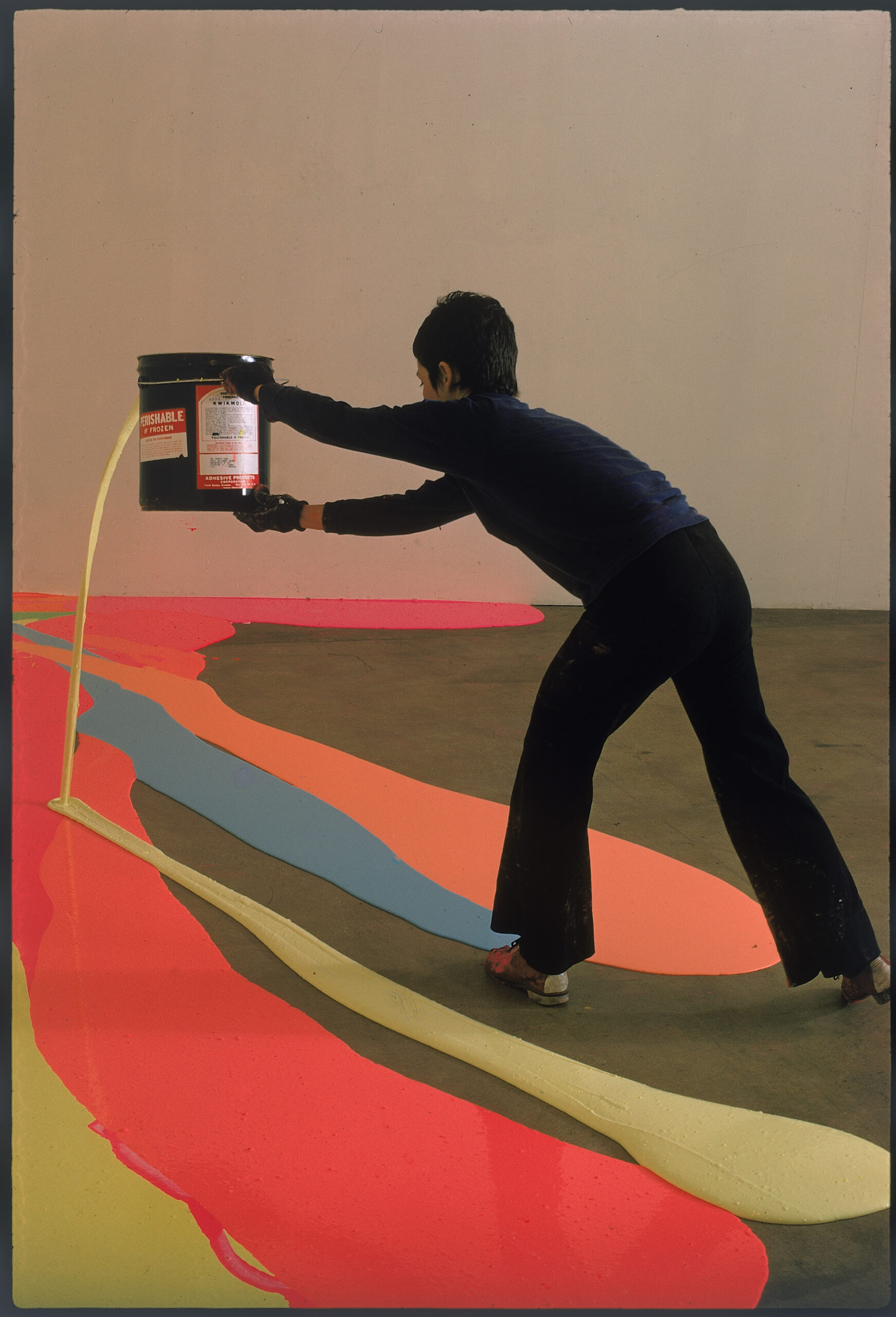The exhibition also shows how these women were not wholly opposed to aligning themselves with institutions, which is not always the way we think about avant-garde artists. To achieve inclusion in institutions of civic culture, as white and Black women, was itself a radical act. They worked inside and out of the establishment, often subversively, as when Page integrated ballet, or when Kuh transformed the Gallery of Art Interpretation at the Art Institute of Chicago soon after she started working there in 1943.
Risk-taking as entrepreneurs was a key component of the avant-garde in a city that was not known for its history of fine-arts practice. The women of Chicago Avant-Garde created their own institutions and spaces, from the dance schools built by both Page and Dunham to Kuh’s commercial gallery to the longstanding youth poetry awards administered by Brooks, as poet laureate of Illinois, with considerable money out of her own pocket. Perhaps institutional recognition is more appealing to those who have long stood outside of its doors.
AC: What were your primary curatorial objectives and what were a few research activities you led in preparation for this exhibition?
LO: The exhibition includes paintings, photographs, letters, books, costumes, and ephemera that illuminate the lives and achievements of the five women. The challenge of the exhibition was figuring out how to tell their stories through these objects. We also wanted to pay close attention to the relationship between the avant-garde styles of the twentieth century and the struggle for racial progress and equal rights for women. How did these women find freedom in an era before voting rights, in an era before the major changes of second wave feminism, in an era of Jim Crow? How did art afford freedoms that were not found in other social and civic spaces?
In January 2020—six weeks before we took to our homes in response to a global pandemic—the Newberry Library hosted a gathering of scholars, curators, collectors, and archivists to consider the ideas and stories that would become Chicago Avant-Garde. I am so grateful for that day of discussion and debate, and the support for it provided by the Terra Foundation for American Art. In the ensuing months, I consulted archival collections—though to a large extent, these were digital, given the fact that most archives (including the Newberry) were closed. I was especially grateful for the recent digitization of the Noguchi archives, which shed light on the incredible collaboration between Noguchi and Page. I was also fortunate to access an oral interview conducted with Dunham in 1995 about her friendship with Kuh—this was revelatory. I consulted with many experts on Chicago’s cultural history and talked at length with editor Susan Rossen, who knew Kuh well. And when the Newberry re-opened, I was so happy to get my hands on collection materials!
AC: The exhibition catalogue was designed by Chicago printmaker Ben Blount and artists Nadine Nakanishi and Nick Butcher of Sonnenzimmer. How did their involvement help capture the spirit of the exhibition and what role does the volume’s design play in illuminating Chicago’s avant-garde past?
LO: Working with Ben, Nadine, and Nick was incredible. They designed the catalogue in the spirit of the women, which is to say, the catalogue was a bold experiment. It was also collaborative, as they passed print sheets back and forth, from Ben’s studio in Evanston to Sonnenzimmer’s studio in a former photo album factory off Irving Park. I think the subversive humor and playfulness of their work—and Ben’s sly radicalism—is very true to the women of Chicago Avant-Garde. Overall, the “look and feel” of the catalogue, as they might put it, was a project of attentiveness, experiment, and virtuosic panache.
The five women of Chicago Avant-Garde created a cultural landscape in Chicago and a mode of being ahead of the times that seems, to my mind, a striking precursor to the poetry of Eve L. Ewing, who created five new poems for the catalogue based on a moment in the life of each woman. Nick, Nadine, and Ben designed a “book-within-a book” for these poems, a distinctive and delightful design. Truly, they created a work of art.





